Protected species in Shenzhen
Writer: Isaac Cohen | Editor: Zhang Chanwen | From: Shenzhen Daily
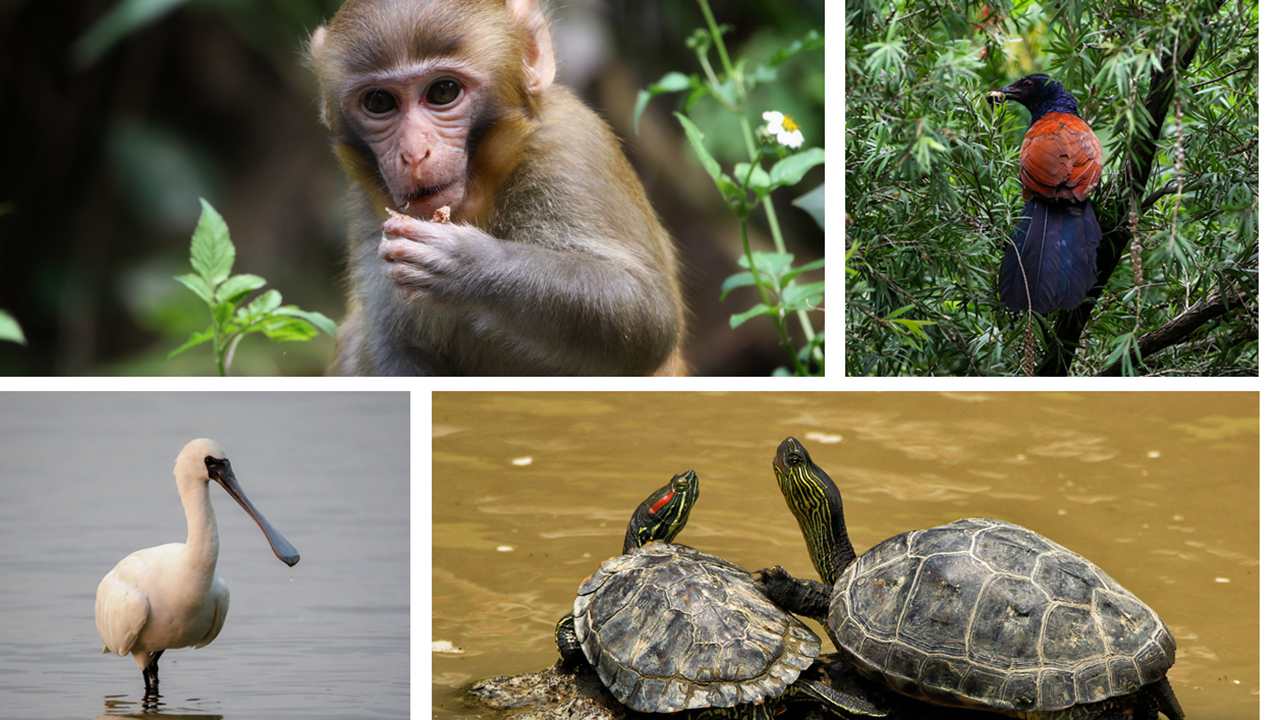 A group of photos of some species that bring special value to Shenzhen and its natural spaces. Photos by Isaac Cohen
A group of photos of some species that bring special value to Shenzhen and its natural spaces. Photos by Isaac Cohen
Discover Shenzhen 50th Special Edition
When studying the ecology of a place, especially that of a country or region, in terms of conservation, there are several factors that bring extra value to its understanding, the most important being its biodiversity. To put it simply, the more species a region has, the more valuable the place becomes and its conservation becomes a high priority as it even brings economic advantages to the country or region.
在研究某一国家或地区的生态环境时,生物多样性是能帮助我们对其形成更准确认识的重要因素之一。一言以蔽之:一个地区的物种越丰富,其生态保护的价值和优先性就越高,也能够为其所处的国家或地区带来较好的经济效益。
The biodiversity value of an ecosystem becomes even more valuable when within the area of study you can find species that are catalogued as endemic or as endangered, endemic meaning they can only be found within that location and nowhere else in the world and endangered meaning they are highly threatened and in risk of disappearing.
如果研究的地区发现特有及濒危种,那么保护其生态系统的价值就更加不言而喻了。特有种指仅分布于某一特定地理区域,而未在其他地方中出现的物种,濒危种则指种群生存受到严重威胁甚至面临灭绝的物种。
In this special 50th edition of Discover Shenzhen, I would like to introduce you to some species that bring special value to our city and its natural spaces, species that make our city even more fascinating and even more worthy of conservation.
时值《Discover Shenzhen》连载迎来第50期。在这周的文章里,我想为大家介绍一些在深圳的生态系统中有着特殊地位的且亟需保护的物种。
The first animal on the list is a mammal that not only has the highest conservation status in China, but also is considered as vulnerable by international environmental authorities. The pygmy slow loris (Xanthonycticebus pygmaeus) is a small nocturnal primate that feeds mainly on flowers’ nectar and sap, although it can also consume small insects. The pygmy slow Loris has been spotted in the eastern mountain parks of Shenzhen.
说到保护动物,首先要提的就是国家一级保护动物,并在世界自然保护联盟(IUCN)红色名录中被列为“易危”的小懒猴(也称倭蜂猴)。它们属灵长类动物,昼伏夜出,主要以花蜜及树木的汁液为食,个别情况下也吃小型昆虫。在深圳东部的郊野公园中,有人曾目击过小懒猴出没。

A pygmy slow loris is seen in a mountain park in eastern Shenzhen.
The second animal on the list is the Indo-Pacific humpback dolphin (Sousa chinensis), another mammal that inhabits the coastal area of Shenzhen. It also shares the highest level of conservation status in China, and is internationally categorized as a near-threatened species, bringing awareness to the need for conservation of our water bodies.
接下来要介绍的是中华白海豚,一种栖息在深圳附近海域的哺乳类动物。它们也是国家一级保护动物,并在IUCN红色名录中被列为“近危”,引发了对海洋环境保护的广泛关注。
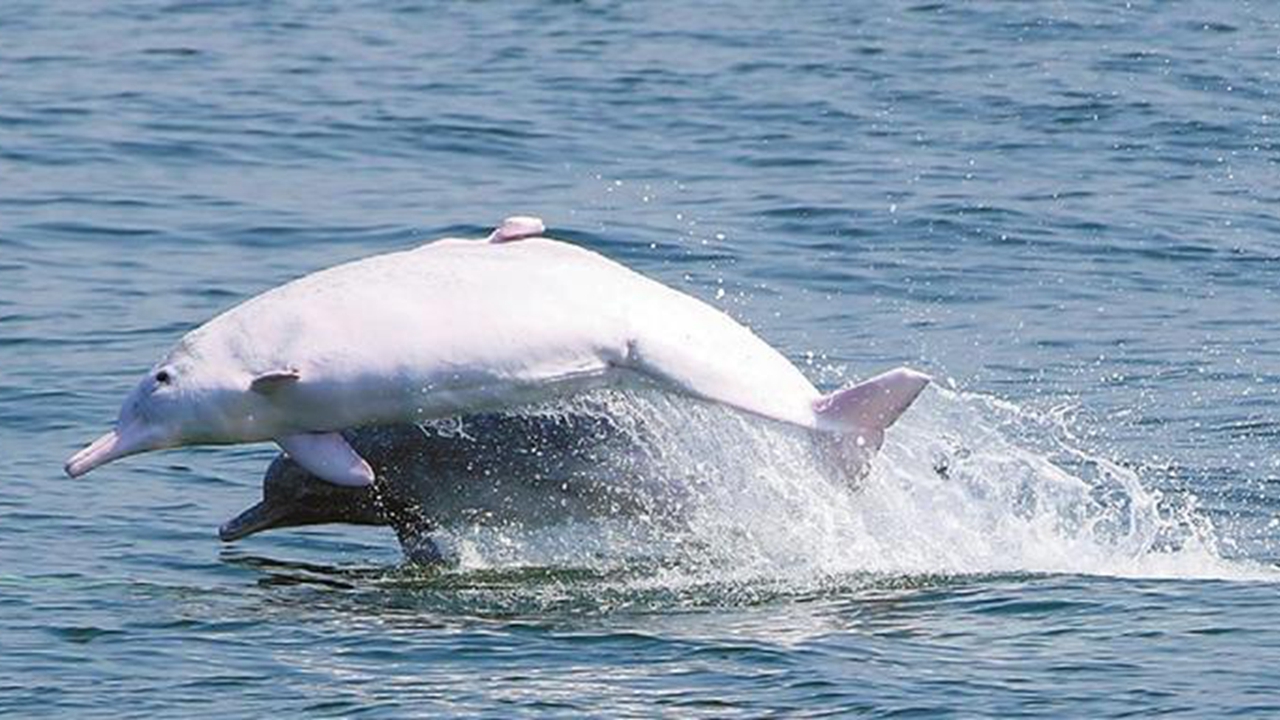
Indo-Pacific humpback dolphins are seen in the Lingdingyang waters of the Pearl River Estuary during a photoshooting trip last January, a spin-off of the Second Expats Eye Shenzhen Photo Contest.
The third animal on the list is our beloved black-faced spoonbill (Platalea minor), a migratory bird considered to be a top-level protected species within China and sadly categorized as an endangered species by the International Union for Conservation of Nature (IUCN) due to its rapid habitat loss caused by the expansion of human settlements. Spoonbills can be enjoyed every year during the winter months when the migratory species come to visit the coastal line of Shenzhen Bay Park.
介绍的第三种动物是深圳人的老朋友黑脸琵鹭。它们属候鸟,是国家一级保护动物,由于人类活动侵占栖息地等因素在IUCN红色名录中被列为“濒危”。每年冬天,黑脸琵鹭就会和其他候鸟一起,南下前往深圳湾越冬。
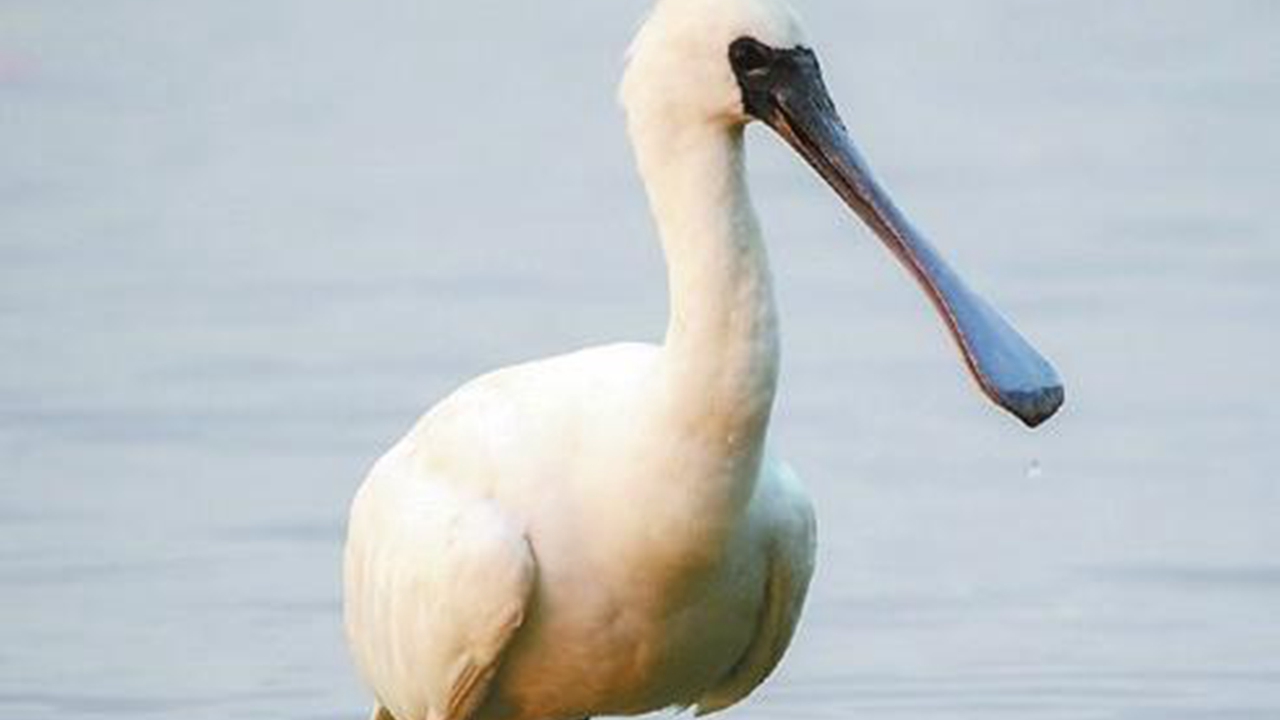
A juvenile black-faced spoonbill is seen at Shenzhen Bay Park.
The fourth spot on our list goes to the Chinese stripe-necked turtle (Mauremys sinensis), a class-two protected species of China and considered to be extremely endangered by the IUCN. This beautiful reptile can be spotted in almost every water body in the city, but its numbers are declining mainly due to the introduction of the invasive pond sliders. People tend to buy this other species of turtle in markets and fairs to keep as pets but later on release them into nature, generating an irreparable damage to the healthy dynamics of the ecosystem.
第四种为中华花龟,其野外种群在《国家重点保护野生动物名录》中被列为国家二级保护动物,在IUCN红色名录中被列为“极危”。它们原本是一种随处可见的水栖龟类,但由于人们大量购买并放生属外来物种的巴西龟,花龟的种群数量急剧下降。同时,巴西龟的泛滥也对本地生态系统的健康带来了不可逆的破坏。
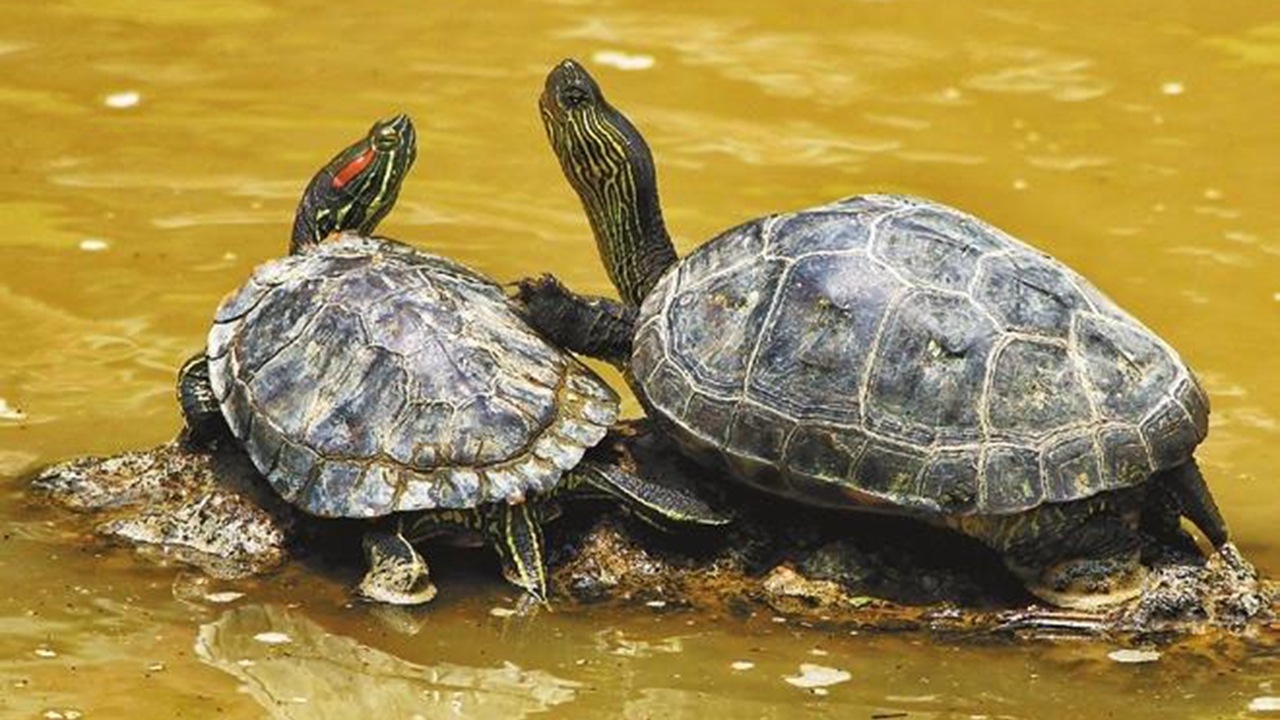
A Chinese stripe-necked turtle (R) is seen next to a pond slider.
On a different level of conservation, there are three other species that are no less important than the four previously mentioned and that also bring important value to our city; they are the Rhesus monkey, a resident of Tanglang mountain; the Pacific reef heron, frequent visitor of the eastern coastal line of Shenzhen, and the greater coucal, a fascinating bird that can be found almost everywhere in the city.
另外还有三种动物,虽然保护等级较低,但也是深圳本地生物多样性的重要成员,包括在塘朗山安家的猕猴,出没于深圳东部沿海地区的岩鹭,和随处可见的褐翅鸦鹃。
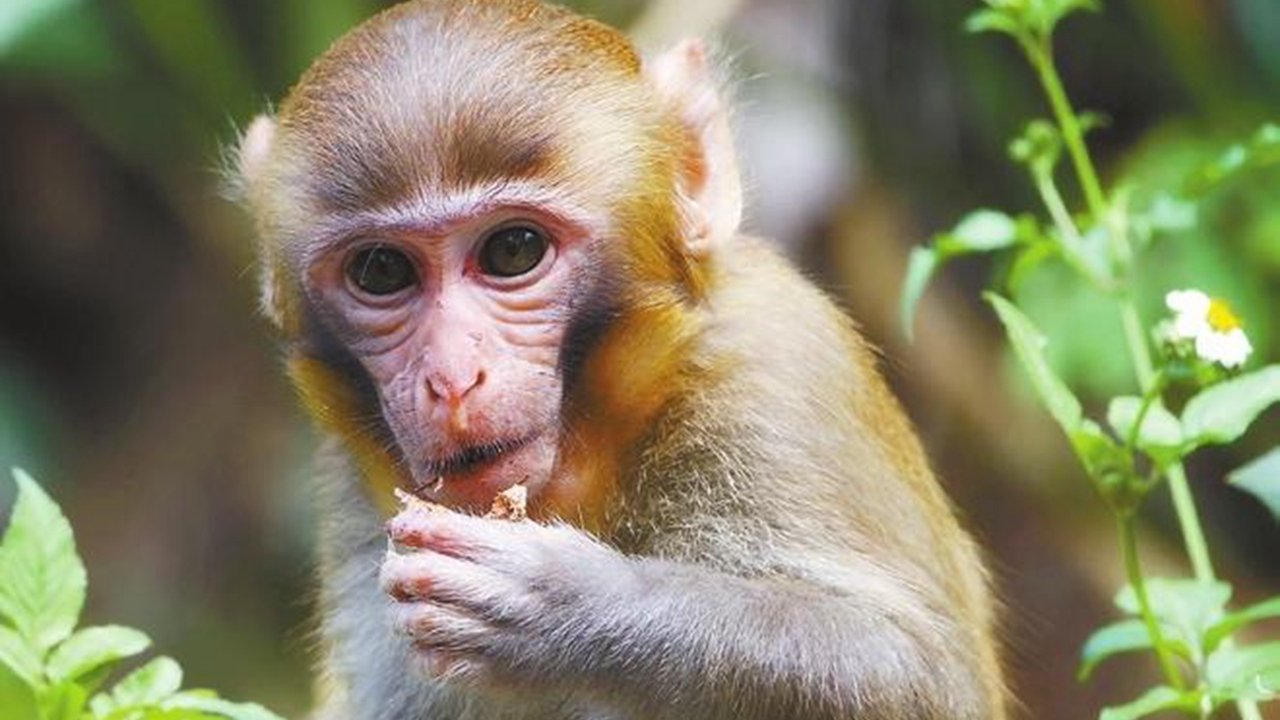
A Rhesus monkey.
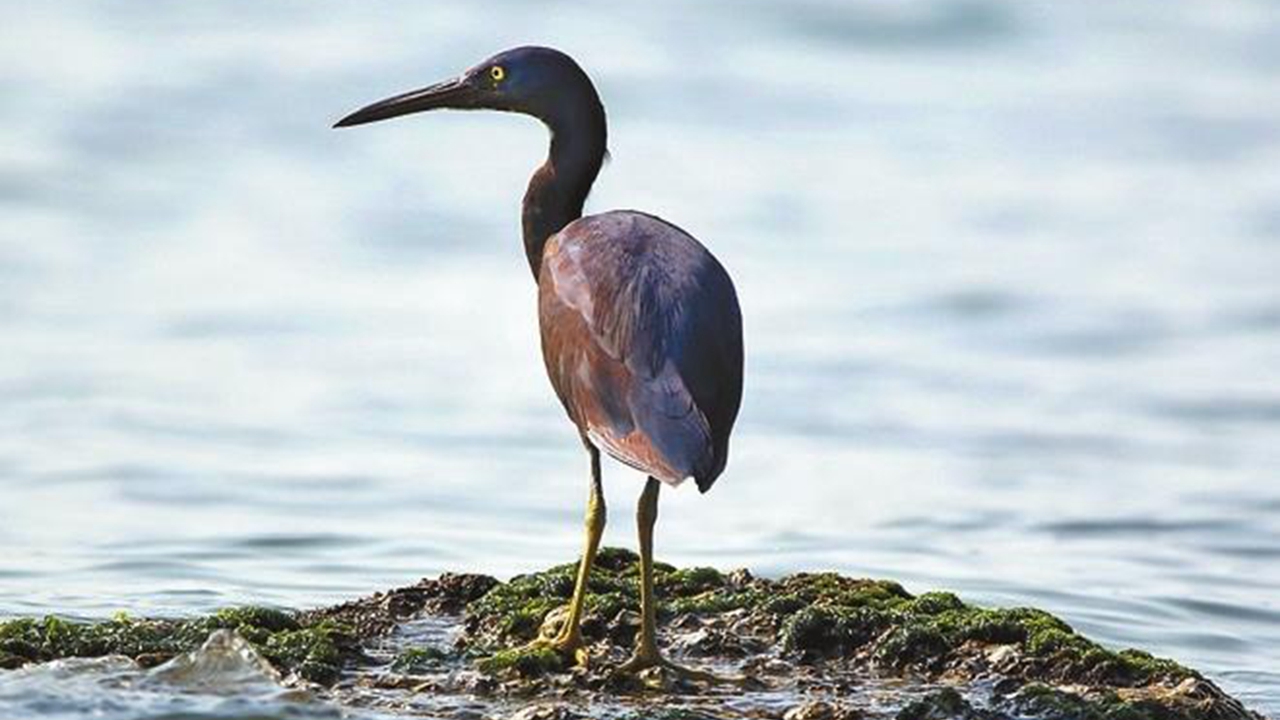
A Pacific reef heron.
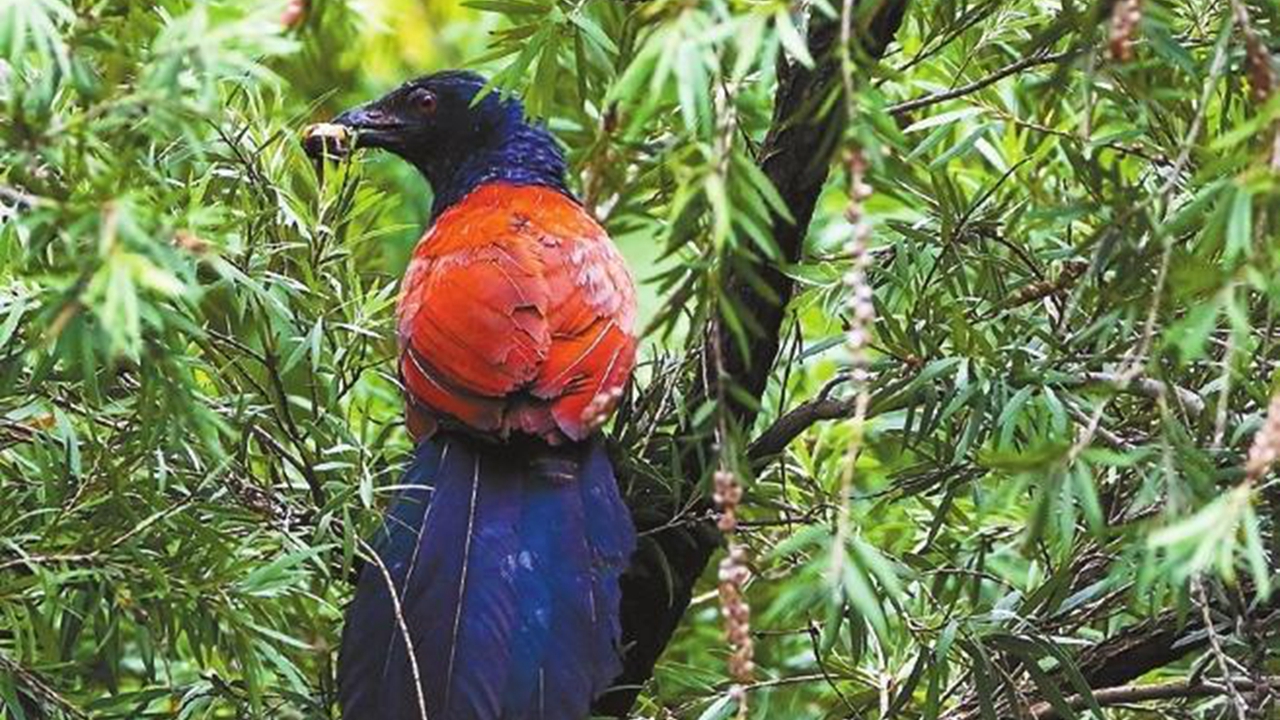
A greater coucal.
Understanding that biodiversity is essential for multiple factors that support life on our planet, and knowing that our city places a high value on its conservation efforts, it is of vital importance that all of us wear the “I love Shenzhen badge” and work together for the preservation and conservation of every living creature and their habitats within our city.
了解生物多样性,就能了解为什么生命能在我们的星球上繁衍生息,以及我们的城市为什么要不遗余力地保护那些生存受到威胁的物种。因此我们要身体力行地“爱深圳”,携手保护这里的动物和它们赖以生存的家园。